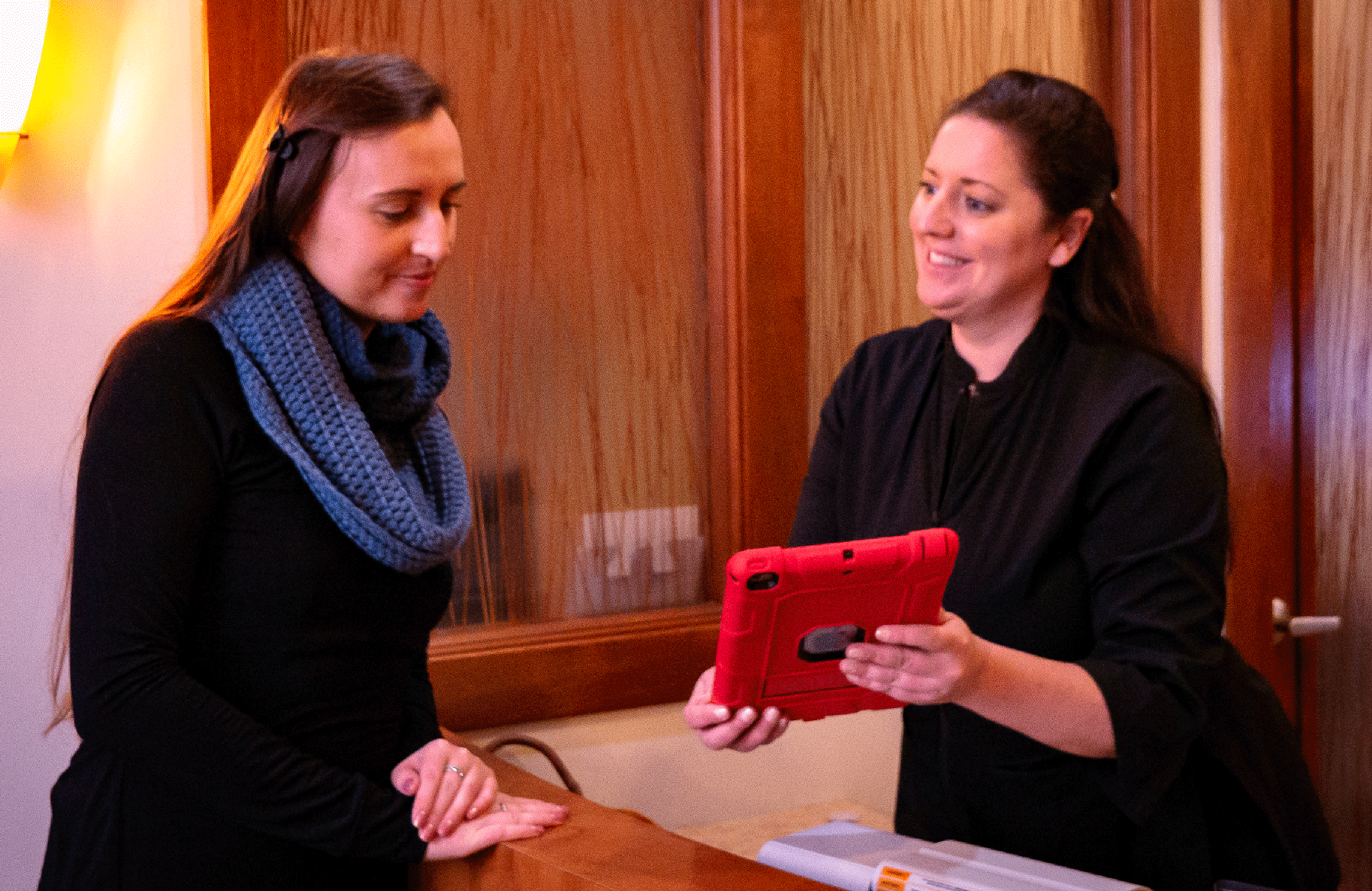Planning Your Visit

Your initial consultation entails an evaluation of your general and oral health. We will gather vitals and review your medical history to identify contributing or correlating factors. During your clinical exam we will perform a thorough assessment of your gums and supporting bone to identify potential gum disease and loss of vital bone volume. Your condition may require subsequent x-rays or laboratory testing.
Why do I need x-rays?
Although your general dentist may have provided our office with x-rays, we often require additional x-rays that provide different angulation, or are more current. Additionally, our x-ray software allow us the ability to measure with pinpoint accuracy the location of critical anatomical features such as nerves and sinuses, a critical factor when placing implants or performing extractions and bone grafts. If the quality of the x-ray that we have received meets all of our requirements, then no additional x-rays will be taken. We never take frivolous radiographs and take exposures very seriously.
Why is oral DNA so critical to my oral health?
Oral DNA is a unique test provided by our office to determine a myriad of information such as bacterial causation, genetic susceptibility and viral or yeast presence. This information is used by Dr. Hosters to make the most accurate recommendations for your unique profile. The report will also profile potential oral-systemic correlations important in your overall health.
General Diagnostic Questions
Why do i need another x-ray, I already have the printed copies from my general dentist?
Even though your general dentist may have provided our office with x-rays, Dr. Hosters often requires additional x-rays that provide different angulation, or are more current. Additionally, our x-ray software allow us the ability to measure with pinpoint accuracy the location of critical anatomical features such as nerves and sinuses, a critical factor when placing implants or performing extractions and bone grafts. If the quality of the x-ray that we have received meets all of our requirements, then no additional x-rays will be taken. We never take frivolous radiographs and take exposures very seriously.
What is the difference between various types of X-rays?
There are essentially 2 types of x-rays taken in our office. The ones with which you are probably most familiar with are called bitewing or periapical x-rays. These 2 dimensional images are a routine and accurate pictures used to diagnose bone loss, accesses and cavities. We use a small digital sensor placed in the mouth to capture the images. Our dental team will position the x-ray appropriately and then ask you to bite on an appliance to keep the x-ray from moving. The other x-ray taken in our office is called a CBCT which stands for cone beam computed tomography. This CT scan provides Dr. Hosters with a 3-dimensional image of your jaw and is often times essential in order to determine if there is adequate bone volume for placement of an implant or to identify critical anatomical landmarks such as nerves and sinuses. The x-ray machine will actually move around your face while you stay still and captures a unique 3D image that provides essential data that Dr. Hosters will share with you.
What is Oral DNA and why do I need it?
Oral DNA is a unique test provided by our office to determine a myriad of information such as bacterial causation, genetic susceptibility and viral or yeast presence. You will be asked to swish and spit with a small volume of liquid that actually binds the bacteria in your mouth. The test will be sent to a laboratory where they use the latest PCR technologies to to analyze your sample. Our office will receive a detailed report identifying specific bacteria, yeast or viral presence or genetic mutations. This information will be used by Dr. Hosters to make the most accurate recommendations for your unique profile. The report will also profile potential oral-systemic correlations important in your overall health. The most commonly used test by Norwood Park Periodontics measures the bacterial profile of your dentition. Rather than making an educated guess of the most efficacious antibiotics, this extremely valuable test allows Dr. Hosters to choose with great accuracy, the appropriate antibiotic to most effectively and efficiently treat your unique disease.
What is a Velscope and why is it recommended?
This diagnostic tool is uniquely beneficial to evaluate for the presence of abnormal and potentially precancerous tissue in the mouth that is often times undetectable by the naked eye. By looking through the scope as it emits a unique wavelength of light in the oral cavity, the operator is able to prescreen for the presence of lesions or areas that may not be normal. And while this tool is not capable of diagnosing cancer, it does provide information that allows Dr. Hosters and his team to find areas that may potentially be abnormal and then act accordingly. A referral to an oral surgeon or a pathologist may be made at the doctor’s discretion.
